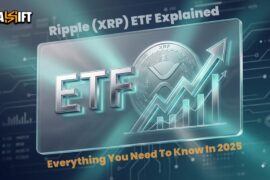Polygon (MATIC) | In 2025, speed, low fees, and interoperability aren’t just luxuries; they’re requirements for anyone serious about DeFi. And that’s exactly where Polygon (MATIC) comes in. Whether you’re a first-time crypto user, a DEX explorer, or someone tired of Ethereum’s high gas fees, understanding Polygon today could give you an edge tomorrow.
Polygon has risen from a promising Layer 2 solution to one of the most actively used chains for real-world DeFi trading, including stablecoins, swaps, NFTs, and more. So trust Flashift, it’s not hype. It’s evolution.
On this page, Flashift will break down Polygon in the most approachable way possible, no intimidating jargon, just clear insights into:
- What Polygon is
- Why MATIC matters in 2025
Whether you’re swapping tokens for the first time or exploring chains beyond Ethereum, this article will show you why Polygon isn’t just an alternative; it’s fast becoming the standard.
What Is Polygon (MATIC)? A Simple Explanation for Beginners
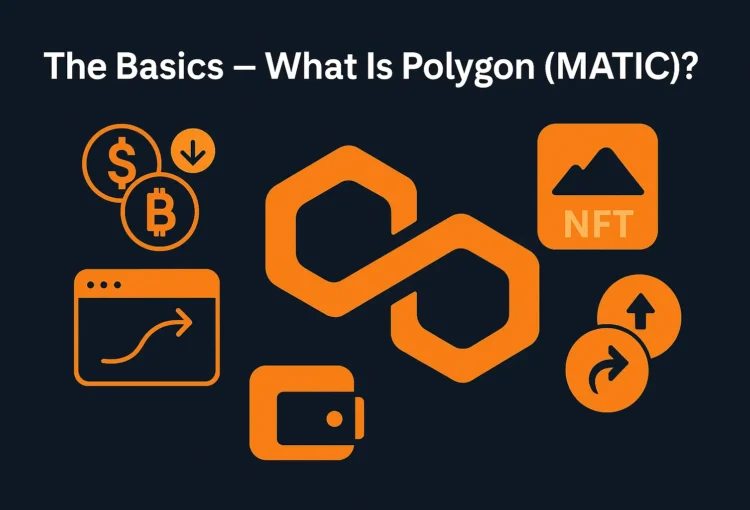
Polygon, formerly known as Matic Network, is a Layer-2 scaling solution for Ethereum designed to make blockchain transactions faster, cheaper, and more efficient, without sacrificing security or decentralization.
At its core, Polygon functions as a multi-chain ecosystem that supports various scaling technologies, including:
-
Proof-of-Stake (PoS) Chain – Polygon’s original and most widely adopted chain
-
zkEVM Rollups – Offering near-instant, low-fee Ethereum compatibility with enhanced scalability
-
Polygon CDK (Chain Development Kit) – Enabling developers to launch custom Layer-2 chains
Polygon’s infrastructure allows developers to build and deploy decentralized applications (dApps) that interact seamlessly with Ethereum, but with dramatically lower gas fees and faster confirmation times.
By 2025, Polygon has solidified its position as one of the most adopted Ethereum scaling platforms, powering thousands of dApps in DeFi, NFTs, gaming, and AI.
What Problem Does Polygon Solve?
Back in the early days, Ethereum was the go-to platform for everything in crypto, DeFi, NFTs, smart contracts, you name it. But as more people started using it, the network became overwhelmed. Suddenly, a simple token swap could cost tens of dollars in gas fees, and transactions could take several minutes to complete. For everyday users, that’s not just annoying, it’s a dealbreaker.
Polygon was created to solve this exact problem. It picks up the slack where Ethereum struggles, offering faster transaction processing and drastically lower costs. That’s why in 2025, we’re seeing a major shift: more developers are building directly on Polygon, and more traders are moving to platforms that support it, like Flashift.
This isn’t a niche solution anymore. It’s the foundation for a more accessible DeFi future.
The Role of the MATIC Token
Now let’s talk about MATIC, the token that powers everything on the Polygon network.
Every time you make a transaction on Polygon, a tiny bit of MATIC is used to cover the network fee. These fees are usually just fractions of a cent, but they help keep the system running smoothly. Beyond that, MATIC is also used by validators who help secure the network, and over time, it will play a role in governance decisions too, giving users a voice in how the ecosystem evolves.
If you’re trading on Flashift or any other DEX on Polygon, you’ll need a small amount of MATIC in your wallet to cover fees. Think of it like gas in your car, it’s what gets your transaction from point A to point B.
But for many, MATIC is also more than just a utility token. It’s a way to invest in the long-term growth of the Polygon ecosystem, one that’s quickly becoming central to how DeFi operates in 2025.
What’s New with Polygon in 2025?
Polygon has entered a new phase in 2025, evolving from a simple Ethereum sidechain into a powerful, modular Web3 infrastructure layer. Here’s what’s driving its momentum this year:
zkEVM Rollout Gains Real Adoption
Polygon’s zkEVM (zero-knowledge Ethereum Virtual Machine) is no longer just a tech demo, it’s live, scalable, and being used by major DeFi platforms for real-world applications. zkEVM allows developers to build on Ethereum with lower fees, faster speeds, and full EVM compatibility, all secured by cryptographic proofs.
Why it matters: zkEVM bridges the gap between Ethereum’s security and true scalability.
Big Partnerships Across Web3 and Beyond
In 2025, Polygon has become the go-to blockchain for enterprise use cases. It now powers apps and tools for global leaders in:
-
Gaming (e.g., Ubisoft, Animoca Brands)
-
Payments (e.g., Stripe, Mastercard pilots)
-
AI & Data (e.g., Graph-based analytics protocols)
This further cements Polygon’s position as a real-world utility layer — not just another altchain.
$POL Token Migration Underway
As part of the Polygon 2.0 upgrade, the legacy MATIC token is being replaced by $POL, a next-generation token designed to support staking, governance, and multi-chain coordination.
-
$POL is designed to be infinitely scalable
-
It allows validators to secure multiple Polygon chains simultaneously
-
Migration tools are being rolled out in phases
Important: MATIC still works, but new applications are being built around $POL — a key shift for long-term investors to watch.
How Polygon Works, Under the Hood (Without the Jargon)
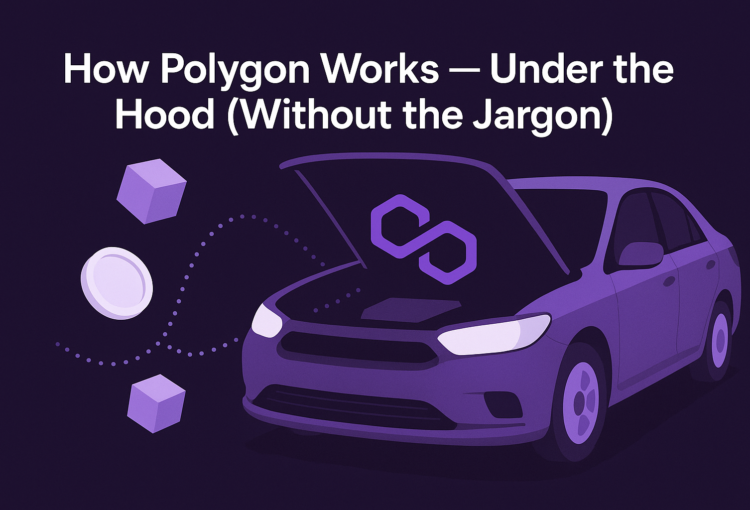
Ethereum is the backbone of decentralized finance, and for good reason. It’s secure, decentralized, and battle-tested. But it wasn’t built to handle the kind of traffic we see today. In 2025, thousands of apps, tokens, games, and NFT platforms all compete for space on the Ethereum network. The result? Congestion, slow confirmations, and painfully high gas fees.
Imagine trying to board a train during rush hour when there’s only one working door. That’s Ethereum on a busy day.
Polygon steps in as a kind of pressure release valve. Instead of clogging the main Ethereum chain with every single transaction, it offloads the heavy lifting to its own network — and then syncs the results back to Ethereum securely. The result is a smoother, faster, and far more affordable user experience.
This is exactly why platforms like Flashift use Polygon: it gives our users the reliability of Ethereum without the cost and delay.
Layer 2 vs Sidechains, What’s Polygon’s Approach?
You’ve probably heard terms like Layer 2, sidechain, and rollup thrown around, and honestly, it can get confusing. So here’s the short version:
- Layer 2 solutions are built on top of Ethereum. They inherit Ethereum’s security, but handle transactions off-chain, only reporting the results back.
- Sidechains are independent blockchains that run in parallel with Ethereum. They’re compatible, but secure themselves.
Polygon actually supports both models, and that’s what makes it so powerful. Instead of betting on just one tech, Polygon offers a multi-chain ecosystem. Think of it as a toolkit with different options depending on what you want to build or trade.
For example:
- The Polygon PoS chain is a high-speed, low-cost sidechain that’s been battle-tested for years.
- The newer zkEVM (zero-knowledge Ethereum Virtual Machine) is a Layer 2 that brings even tighter Ethereum compatibility — and it’s gaining serious momentum in 2025.
So whether you’re a developer building the next DeFi protocol or a trader swapping tokens on Flashift, Polygon has an infrastructure that fits.
Popular Tools in the Polygon Ecosystem (zkEVM, PoS, etc.)
In 2025, the Polygon ecosystem isn’t just one blockchain, it’s a full suite of scaling solutions. Let’s break down the key ones you’re most likely to interact with:
- Polygon PoS: This is the most widely used chain. It uses a Proof-of-Stake model to keep things fast and cheap. Most DeFi apps (including Flashift’s Polygon version) run here.
- Polygon zkEVM: A cutting-edge Layer 2 solution that mirrors Ethereum’s logic but with much higher efficiency. It’s perfect for developers who want speed and full Ethereum compatibility. It’s still early but adoption is growing fast.
- Polygon CDK (Chain Development Kit): This tool allows anyone to launch their own custom Layer 2 chain, secured by Ethereum and connected through Polygon’s ecosystem. Think of it as a plug-and-play blockchain toolkit.
Together, these tools make Polygon one of the most developer-friendly and trader-ready ecosystems in crypto. They’re the reason why we chose to integrate Flashift with Polygon early, and why we believe this network will continue to lead the charge in DeFi scalability.
MATIC in 2025, Utility, Price Speculation, and Outlook
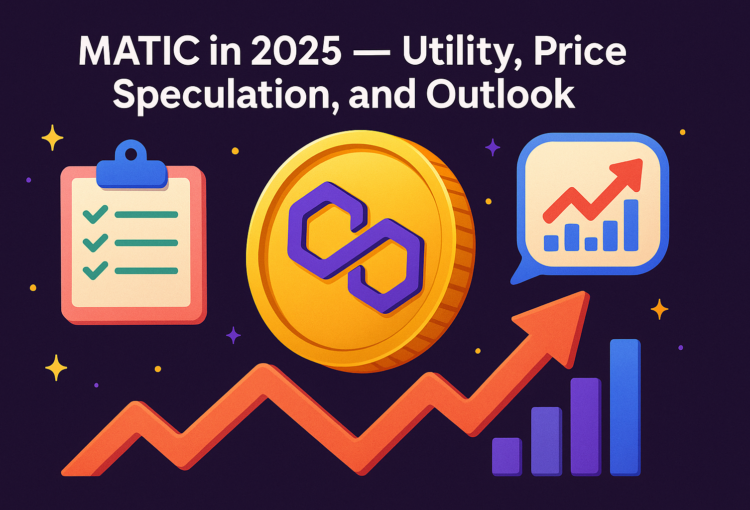
MATIC isn’t just a speculative token, it’s the fuel that keeps the Polygon machine running.
First and foremost, MATIC is used to pay transaction fees on the Polygon network. Whether you’re swapping tokens, bridging assets, or minting NFTs, you’ll need a small amount of MATIC to process those actions. The good news? Fees are usually just a few cents, and the experience is lightning fast, a big reason why platforms like Flashift love building on it.
Beyond that, MATIC powers staking. Validators on the network stake MATIC to secure the chain and validate transactions. In return, they earn rewards, and regular users can join in by delegating their MATIC to validators, earning passive income without needing to run nodes themselves.
Polygon is also evolving toward governance, where MATIC holders will help vote on upgrades, protocol changes, and treasury decisions. In other words, it’s not just a token you use, it’s one you can have a say with.
What Analysts Say About MATIC’s Future
In early 2025, MATIC has been trading between $0.85 to $1.30, depending on broader market trends. But price is just part of the story, the real bullish sentiment comes from what Polygon is building.
Institutional interest in zk-rollups and Ethereum scaling has put Polygon on the radar of major firms. JPMorgan, Reddit, and even some government blockchain pilots have already tested or deployed on Polygon infrastructure in the past. That momentum hasn’t slowed — if anything, it’s matured.
Analysts point to several growth drivers:
- Adoption of zkEVM among developers and DeFi protocols
- Increased NFT and gaming activity on Polygon (especially from Asia-based projects)
- A rising number of real-world asset tokenizations (RWAs) — stablecoins, carbon credits, loyalty programs — all using Polygon’s low-cost infrastructure
If Ethereum remains the core of Web3, analysts believe Polygon is the scaling layer that will carry much of the real volume, and MATIC is the key to that engine.
Should You Care About Holding MATIC?
If you’re trading on Polygon — yes, absolutely. You’ll need a bit of MATIC to cover fees. But the bigger question is whether you should hold it long-term.
Here’s the perspective we’ve seen from many of our own traders at Flashift:
MATIC isn’t just another token with hype cycles. It’s part of a network that’s being used daily, not just by crypto natives, but by companies, governments, and emerging Web3 applications.
If you believe in:
- Ethereum’s long-term growth
- The need for scalable, affordable DeFi
- A multi-chain future where speed and interoperability matter
…then holding some MATIC isn’t speculation — it’s strategy.
Of course, like any crypto asset, price moves will be volatile. But utility-backed tokens like MATIC tend to endure beyond market trends. That’s why we’ve doubled down on Polygon at Flashift, and why we think it’s worth a spot on your radar.
Getting Started with Polygon in DeFi
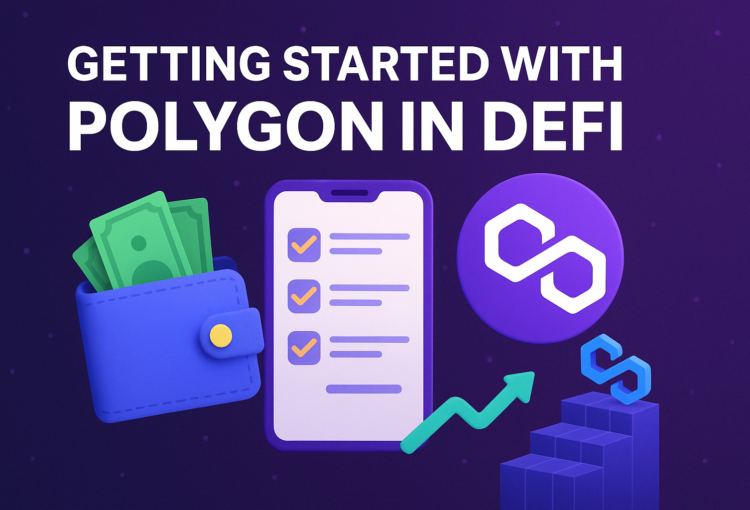
You’ve heard the buzz. You’ve seen how fast and cheap it is. Now it’s time to actually use Polygon, and you’ll be glad to know it only takes a few minutes to get started.
Whether you’re here to swap tokens on Flashift, explore NFTs, or just test the waters, this section will walk you through the basics, clearly, simply, and safely.
Using Flashift and Other DEXs on Polygon
Once your wallet is set up, it’s time to explore. And if you’re looking for speed, simplicity, and DeFi without the fuss, Flashift is the perfect starting point.
Our platform is built to make swapping tokens on Polygon as easy as possible — no charts, no complications. Just connect your wallet, choose your tokens, and confirm. All with low fees, fast confirmations, and no logins or KYC.
You can:
- Swap major tokens like USDT, DAI, ETH, MATIC, and more
- Discover DeFi tokens native to the Polygon ecosystem
- Enjoy smooth UX without worrying about network congestion
And if you want to explore other DEXs too, like QuickSwap or Sushi on Polygon — go for it. Polygon is an open network, and Flashift is here to help you move confidently across it.
Tips for Beginners to Stay Safe
DeFi is empowering, but it comes with responsibilities. Here are a few things we recommend to all new users:
- Always double-check URLs. Scammers love to imitate real platforms. Bookmark Flashift.app and only use trusted RPC endpoints.
- Start small when swapping or bridging assets. Test with small amounts before moving larger funds.
- Keep a little extra MATIC in your wallet. You’ll need it for gas — and running out can lock you out of making transactions.
- Use hardware wallets or trusted mobile apps for better security.
- Avoid copy-pasting addresses blindly. Always double-check the recipient address when sending tokens.
Polygon makes DeFi more accessible, but your safety depends on staying alert — especially when you’re new.
Conclusion: What’s Next for Polygon and For You
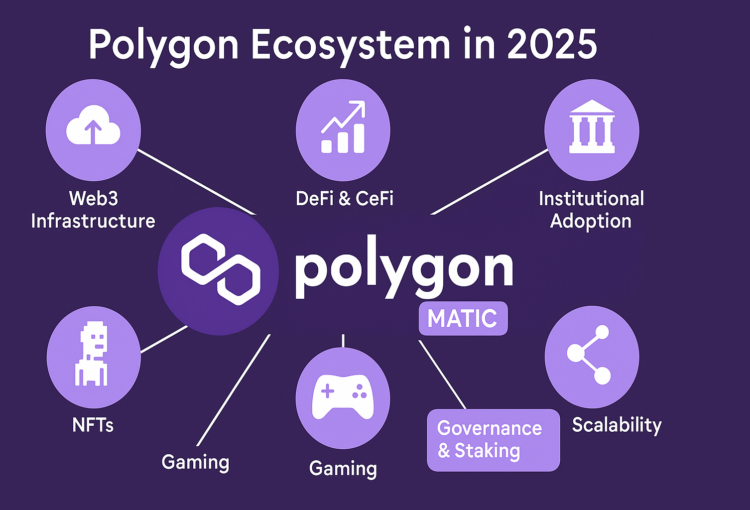
Polygon isn’t just another blockchain. It’s a carefully engineered solution to one of crypto’s biggest challenges, making DeFi truly usable for everyday people.
In 2025, as Ethereum continues to serve as the foundation of Web3, Polygon is stepping into its role as the scaling layer that makes that foundation accessible. Faster transactions. Cheaper fees. Seamless user experience. That’s what it delivers, and that’s why it matters.
For you as a user or trader, this means you no longer have to choose between functionality and cost. You can swap tokens, explore DeFi apps, or even mint NFTs without breaking the bank or waiting in line.
At Flashift, we’ve embraced Polygon because we believe this is how decentralized trading should feel:
Fast. Frictionless. Friendly.
So if you’re ready to take that next step, whether it’s your first DeFi swap or your fiftieth, we invite you to try Flashift on Polygon. No registration. No clutter. Just clear, smooth crypto trading the way it was meant to be.
FAQ
-
What is Polygon (MATIC) in simple terms?
Polygon is a blockchain network that works alongside Ethereum to make transactions faster and cheaper. It’s like an express lane for DeFi apps, trading platforms, and NFTs.
-
Do I need MATIC to use Polygon?
Yes, you’ll need a small amount of MATIC in your wallet to pay for transaction fees on the Polygon network. The good news is: fees are extremely low, often just a few cents.
-
Is Polygon a Layer 2 or a sidechain?
Polygon started as a sidechain (the PoS chain), but now offers multiple scaling solutions, including Layer 2 rollups like zkEVM. It’s a flexible ecosystem built to serve different needs.
-
How do I add Polygon to MetaMask?
You can add it manually by entering network details (RPC URL, chain ID, etc.), or connect to apps like Flashift that prompt you to switch networks automatically.
-
Is Polygon safe to use for DeFi?
Yes, Polygon is backed by strong security practices and continues to grow with support from major DeFi platforms. Just like any network, your safety also depends on using trusted apps and managing your wallet securely.
-
Can I use Flashift on Polygon?
Absolutely. Flashift fully supports the Polygon network, offering fast token swaps, low fees, and no KYC. Just connect your wallet and start trading instantly.






